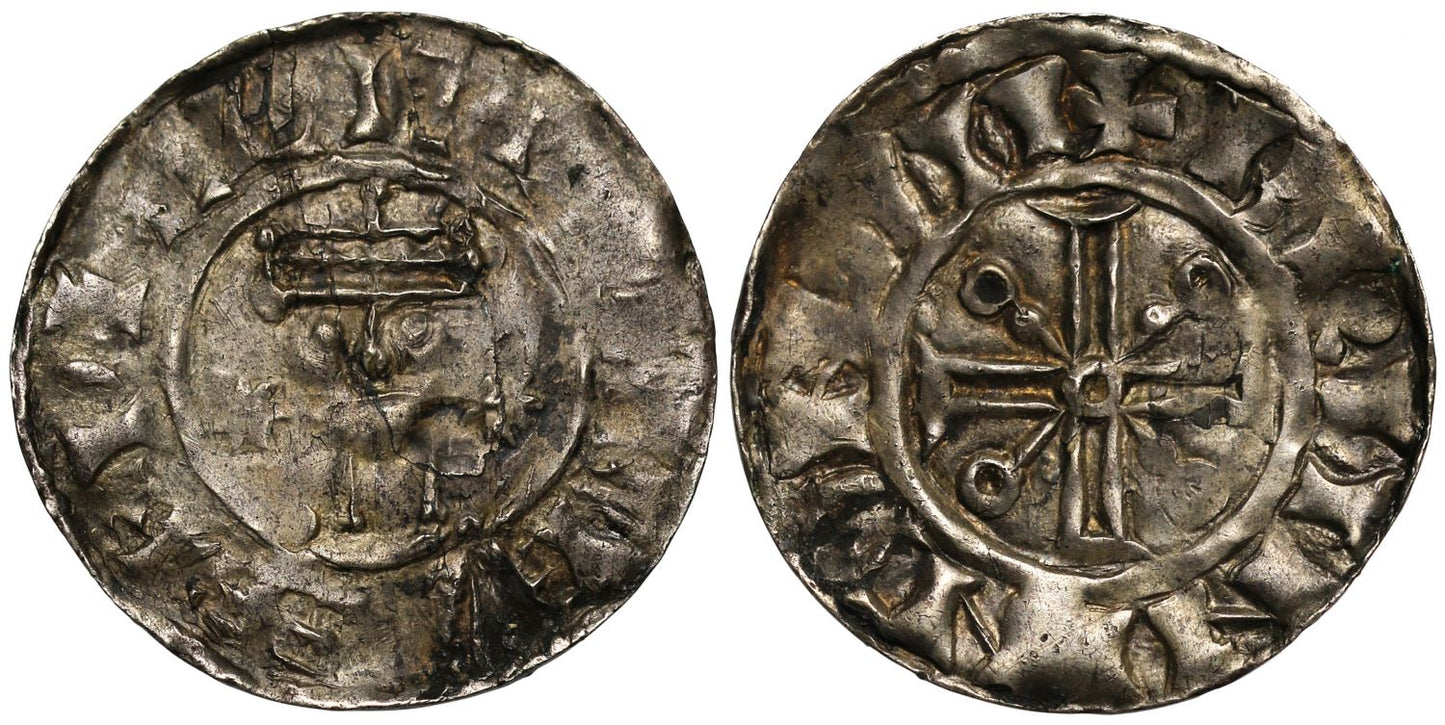FAQs
What makes a coin valuable?
I have coins to sell, what’s the next step?
How will my purchases be shipped?
What happens if I’m not entirely happy with my purchase?
William II Penny, voided cross type, Lincoln Mint, moneyer Bruninc
William II (1087-1100), silver Penny, two stars / voided cross type (1092-95?), London Mint, moneyer Brunnic, facing crowned bust to edge of coin, large star either side, Latin legend commencing lower left with inner linear and outer beaded circles surrounding both sides, +PILLELM RE, rev. annulet at centre of voided cross pattée, over a cross annulettée in saltire, +BRVNNIC ON LIII, weight 1.31g (BMC type III; SCBI 36:914 Berlin; N.853; S.1260). Toned, weak in parts though with a decent portrait of the King, very fine for issue, rare.
The legends translate as "William King " on obverse and on the reverse "Brunninc of London."
North records up to 11 moneyers working at Southwark for William I and I and producing all types for William II.
William Rufus was the third son of William I, with the name Rufus perhaps a reference to him being a red-haired child or less likely due to ruddy appearance. He never married or had any children, and was a wise ruler and a victorious leader, but at the same time some said uncultivated in taste, without dignity or social graces and without showing religious piety or morales, and some said even addicted to vices. He did however maintain justice and good order for England, the throne of which he received on the death of his Father, with his eldest brother Robert Curthose inheriting Normandy with whom William had a peaceful relationship. William Rufus extended rule into Anglo-Norman Wales and had Scotland under his lordship whilst he recovered Maine while pressuring Vexin in France. William famously suffered his death whilst hunting in the New Forest on 2ndAugust 1100, a stray arrow taking his life, perhaps accidental with unproven suspicions of murder, his nobleman having deserted him in the heat of the moment. Ironically his elder brother Richard, the second son of William the Conqueror had also died in a New Forest hunting accident circa 1075, which paved the way for William Rufus to accede the English throne. As he died childless the throne then passed to his younger brother Henry known as Henry Beauclerc.
Capital City London upon the River Thames following Roman occupation, minted some of the earliest Saxon coins with gold Thrymsas and silver denarii with a "Londuniu" signature. Mercian Kings beginning with Offa minted coins there, but the first coin to actually say City of London upon it is the unique Ludica portrait Penny that was found in 2016, followed by subsequent coins of Ecgberht. In 871 the Danes wintered in London for the first time but was King Alfred of Wessex who settled and fortified the capital circa 880 to resist further invasions. Edward the Elder incorporated the City in Wessex in 911 and it resisted a major attack in the reign of Aethelred II in 1009. However, London submitted to the Danish Swein in 1013, but three years later the citizens accepted Eadmund Ironside as King and resisted a siege by Canute.
Later unsettled times occurred in the anarchy period of the reign of King Stephen, remaining loyal to the King except for a few months in 1141 when Empress Matilda was admitted but within a short time expelled. Coinage activity here has been mostly constant throughout history from the Romans until the reign of our current Queen and only moving out to Wales from 1969.
Provenance:
Ex D. Meisner Collection, Classical Numismatic Group, E-Sale 389, 17th January 2017, lot 1187.
FAQs
What makes a coin valuable?
I have coins to sell, what’s the next step?
How will my purchases be shipped?
What happens if I’m not entirely happy with my purchase?













